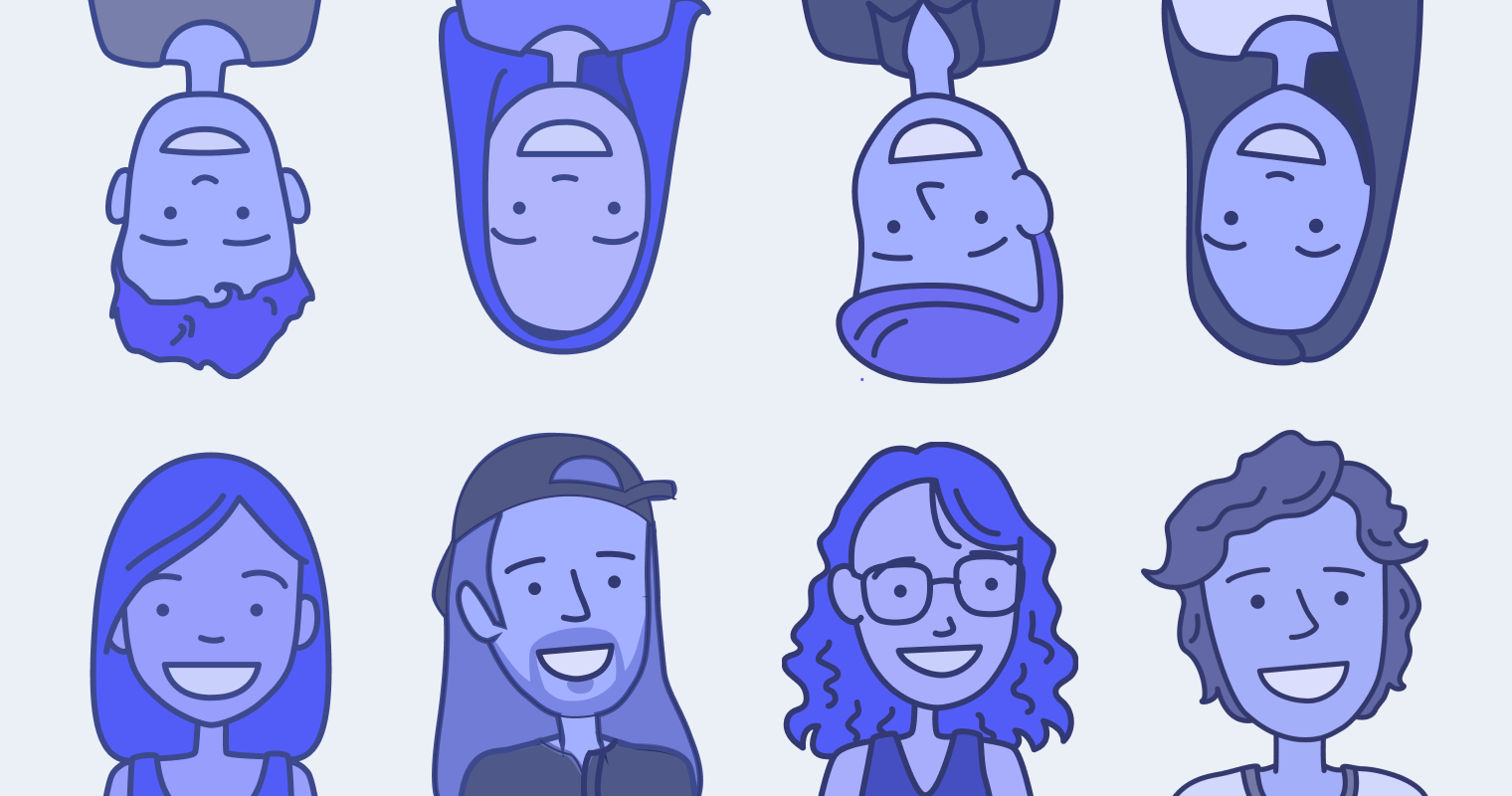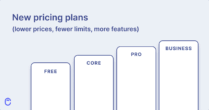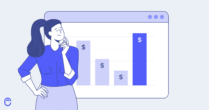In the world of SaaS, especially bootstrapped SaaS, revenue growth is the name of the game. But how can you grow almost as fast as VC-backed companies? The answer lies in strategic hiring.
We’ve learned a lot about startup hiring since starting Canny. We launched Canny in 2017, and after reaching ramen profitability, began hiring in 2018.
We discovered that organic growth and deliberate hiring decisions are crucial. Unlike heavily funded companies, bootstrapped companies like Canny don’t feel the same pressures to hire rapidly. We grow our team as our revenue grows. We always keep profitability top of mind.
How we began hiring
Our first hire at Canny was a big step for us. Sarah and I were managing everything ourselves, but we were also quickly getting stretched thin.
“We were starting to feel overwhelmed. From building our product to doing marketing, we split founder time into many areas. Since we were profitable, we started to ask ourselves – how can we best spend our money to grow faster?”
Sarah Hum, co-founder at Canny
At some point, we became so busy that we realized we needed help. Our main duties were demos, customer support, content marketing, and product development. This is a lot for two people. The day-to-day operations were keeping us from focusing on the bigger picture.
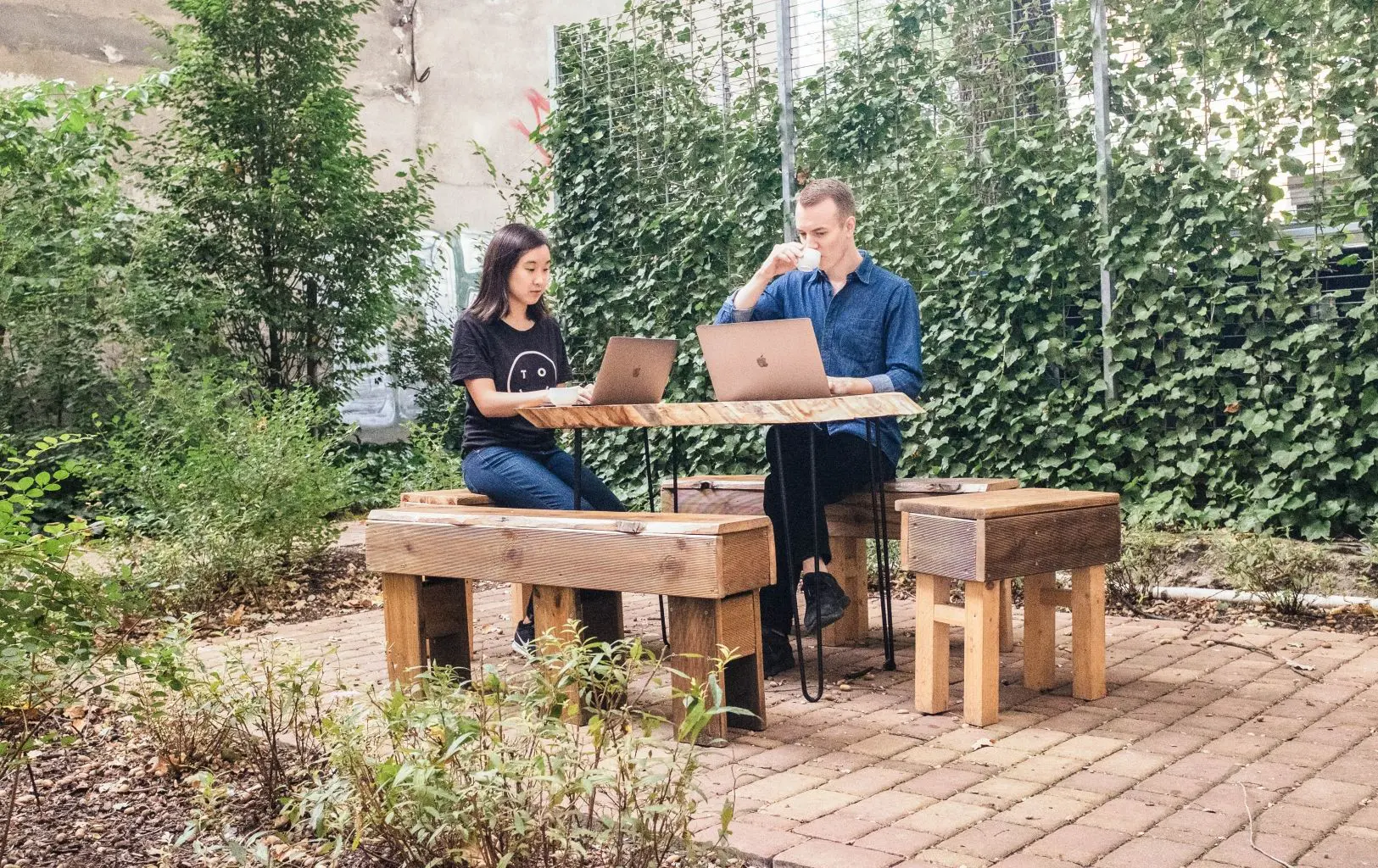
On top of that, we didn’t have any experience with sales, support, or marketing. We wanted to bring in experienced people who focus on one thing full-time and do it even better than we could.
We asked ourselves: “What’s the one role that would make the biggest impact right now?”
We landed on content marketing. Many advisors have stressed the long-term importance of content marketing and SEO for SaaS companies. That it takes 6-12 months to really start working. This determined our first hire.
Lessons from the first few hires
Every new team member changed Canny a bit. We learned to look beyond skills. Fitting in with our company culture mattered a lot.
When culture-add team members join, they fit right in. They also hit the ground running right away. This is an awesome feeling for everyone.
Sometimes, things won’t work out – it can be difficult to technically vet for a role that you’ve never done yourself professionally. We learned that take-home assessments are very important. It gives us an idea of the work a candidate will produce and how well they take feedback. For example, today we ask all content marketing candidates to complete a blog post outline and draft.
We went through lots of challenges, and we view them as lessons. The first time we had to let someone go was extremely difficult but necessary. Going forward, we tried to polish our processes and learn from our mistakes. We are still learning.
Key lesson: don’t rush hiring. Take time to find people who you are confident are great at their job. This may involve a longer hiring process and asking others for help.
Tools and processes we used
We started simple. Online job boards and our network were our go-to. In particular, Hacker News: Who is hiring? and RemoteOK forums came in handy.
As we grew, we adopted tools like Recruitee. It helped us reach more candidates and streamline the hiring process.
Initially, our process was basic:
- Understand what’s bringing in revenue (sales, marketing, advertising, etc)
- Determine what role we need to fill based on that
- Find gaps in the business – where are we stretched thin?
- Make sure we have enough money to hire
As we hired more, we saw the need for structure.
We set up clearer stages in the interview process and defined roles for team members in hiring. It made everything more efficient and fair.
Our team enjoys being involved in hiring – it gives them a sense of ownership. They feel that they have a say in what happens at Canny.
Recently, we hired a head of operations, Clare, who’s now in charge of recruitment. Here’s what she shared about hiring:
“Hiring is a task that many people own at Canny. This means we need to be crystal clear on our ideal candidate from the start.”
Clare Garrity, head of operations at Canny
Key lesson: start with simple tools and grow your process as your startup expands. Emphasize clarity and structure in hiring. Involve your team for a sense of ownership.
Signs for other founders
How do you know when it’s time for you to hire? Most founders try to do it all themselves for way too long. Others hire too early.
Here are a few signs to look out for. They’re good indicators of whether or not it’s time to hire.
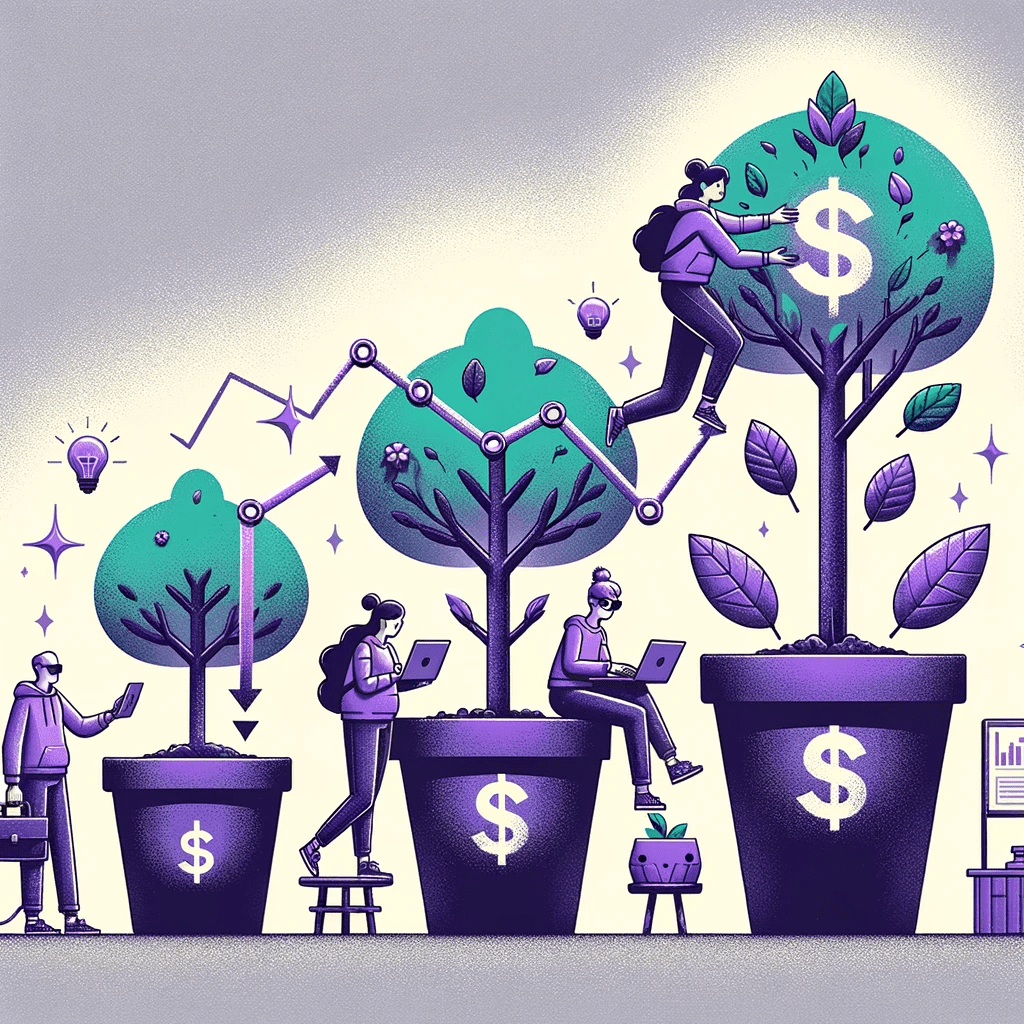
Hiring when you need to
Timing is everything in hiring. It’s tempting to build a large team quickly, especially when you see others doing it.
At Canny, we learned to hire in sync with our revenue growth. This means understanding your business’s actual needs and not just hiring to fill perceived gaps.
Ask yourself: “Is this role essential for our next growth phase?” If the answer is no, it might be wise to wait.
Making cost-effective decisions
Bootstrapping teaches you the value of every dollar. We apply this to hiring – we’re strategic about who we hire and when.
It’s not just about salary costs. Factor in the costs of recruitment, training, and onboarding. Sometimes, it’s more cost-effective to outsource certain tasks temporarily or use automation tools until you’re ready for a full-time role. We still hire freelancers and consultants from time to time.
Balancing skills and budget constraints
In a bootstrapped startup, you might not be able to offer top-market salaries. This means getting creative. You can offer equity, flexible work arrangements, and growth opportunities.
Look for candidates who are motivated by the role and your company’s vision as opposed to just a paycheck.
Key lesson: grow the team alongside revenue. Assess the real need for each role. Prioritize strategic, cost-effective hiring decisions over rapid team expansion.
How to drive quality applications and fill roles quickly
We mentioned that rushing through hiring isn’t the best idea. However, taking too long to fill a role might hurt your efficiency. It’s all about balance.
At Canny, attracting a large pool of quality applicants wasn’t an overnight success. It took time, experimentation, and refining our approach. Here’s what we learned.
Create a clear and streamlined hiring process
Admittedly, we haven’t always had a solid process. But we’ve learned along the way.
We have clear stages for our hiring process and assigned owners to each stage. This helps with accountability and efficiency. From the initial application to the final decision, every step is structured. This makes the process smooth for both candidates and our team.
We’re happy to see the results of these efforts now. Today, we publish a listing and get 1,000+ applicants. Recruitee is a great platform that helps – it pushes the listing to Google, Indeed, and LinkedIn. Hacker News: Who is Hiring is another great source of candidates.
This presents a new challenge – going through such a large number of applications. Here’s how we overcome it.
- A freelancer goes through all applications, filtering out candidates who:
- Don’t have relevant experience
- Didn’t answer the “Why do you want to work at Canny?” question well
- Don’t meet any other requirements we included in the job listing (eg. timezone, experience)
Note: we find that onboarding and initial collaboration are tough outside of North American time zones. That’s why we prioritize them.
2. For some roles, we first schedule an initial screen. For others, we send them the technical assessment right away.
3. Then we schedule 1-2 technical interviews (depending on the role).
4. We progress candidates to the culture interview.
5. We book a final call to present them with an offer and discuss it.
We ask our new hires how the hiring process was for them. Here’s what one of our recent hires shared with us:
“I applied around Christmas time. I didn’t expect to hear back until late January. In the end, Canny got back to me within 10 days – the first company I heard back from. After each stage, I heard back within an hour! The team was lightning-fast with feedback. It felt like they were as excited about me as a candidate as I was for joining Canny!”
Niall Dickin, engineer at Canny
Build a strong employer brand
We quickly realized how our brand affects attracting top candidates. Many people don’t want to work for any company. They want to connect with the brand.
We’ve been consistently showcasing our culture and values through our content. The goal has always been to highlight what makes Canny unique. Sharing our story has always helped with that.
Adapt to economic changes
The economy always plays a role in hiring.
Economic downturns can lead to a larger pool of applicants. But they also bring challenges like budget constraints.
We don’t let economic fluctuations deter our hiring. Instead, we adapted. We only hire when we have the budget for it. Being bootstrapped helps with this. We also try to focus on essential hires that directly contribute to our growth and sustainability.
Key lesson: invest in attracting the right candidates. Use recruitment platforms, community forums, and social media. Showcase your employer brand, and evolve with the market.
Canny’s hiring approach
We’ve spent a lot of time polishing up this process. We wanted to make sure that we’re hiring efficiently, treating candidates fairly, and finding the best culture fit. Here’s how we achieve this.
Setting clear criteria for each stage
Every stage of our interview process has specific criteria for passing or failing. This clarity helps us maintain consistency in our assessments. It also ensures that all candidates are evaluated based on the same standards.
We use Recruitee’s scorecards to set clear passing and failing criteria. This helps everyone involved in hiring.
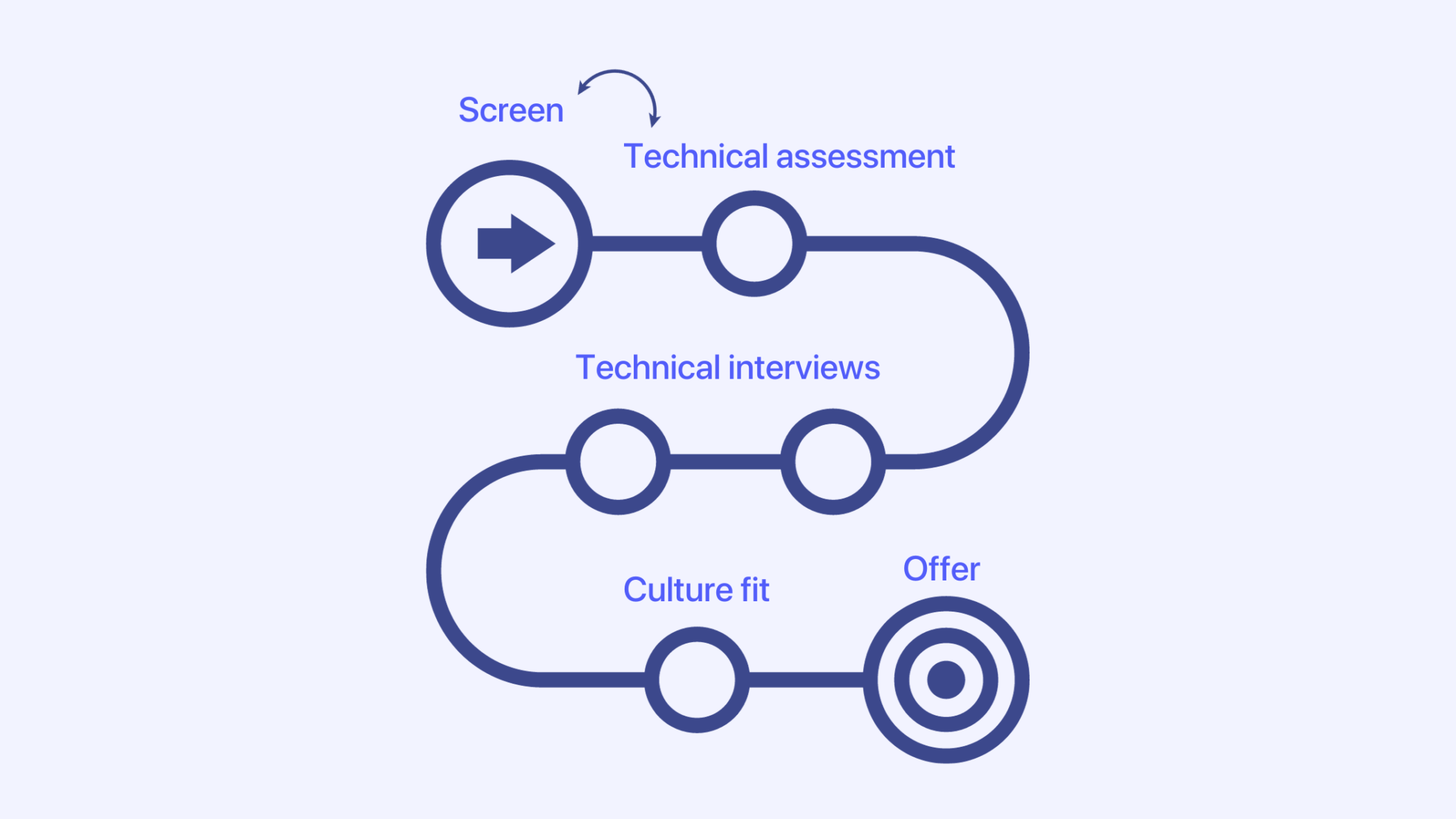
We want to be fair and transparent throughout the process. It differs from role to role, but here’s how it works:
Screen
This is the 15-30-minute call to get an alignment check. We try to understand where each candidate has been (work-wise) and where they want to go.
To assess how it went, we ask ourselves:
- Did this person meet the minimum criteria we set? (experience, skills, etc.)
- Did they answer all the questions thoroughly?
- Can we give them the career opportunity and progression they’re seeking?
- Will they fit in well?
- Do their compensation expectations match what we can offer?
- Will the logistics work out (primarily time zones)?
- Do they care about joining Canny more than just wanting any job?
We place a high emphasis on relevant experience. For most of our roles, we look for candidates who have experience in:
- A similar role
- B2B SaaS companies
- Startup environment
“We work as a team to identify who our ideal candidate is. It’s important to distinguish between the areas of the role a person can learn on the job and what experience we need them to have already.”
Clare Garrity, head of operations at Canny
This is not just about the years in the field. We look for practical skills and knowledge.
“It’s important to hire engineers that can identify an issue’s root causes, not just mask its symptoms.”
Dan Murray, engineer at Canny
Assessment
We design a technical assessment for every role. It’s meant to be a quick take-home assignment that mimics a typical work project at Canny.
For engineering roles, we’ve decided to put the assessment first, before the screen. This helps us remove bias and surface technically able candidates faster.
Candidates can get a sense of what working at Canny feels like. They get a few days to complete it, so they can work at their own pace.
“Canny’s interview process involved a fun and relevant take-home task. This is a rarity when interviewing for software engineer roles.”
Niall Dickin, engineer at Canny
Some companies forego the assessment stage to move faster. We found that, if you design the assessment well, grading it should take only a few minutes. When you can evaluate assessments this fast, you can still consider many candidates. This benefits both you and all the candidates who applied. And everyone gets a taste of collaboration.
Technical skills are a cornerstone of our assessment. This is especially true for engineering roles.
We seek engineers who think deeply about problems and are committed to sustainable, long-term solutions. We also need people who aren’t afraid to try something they’ve never done before and “fake it till you make it.”
Dan Murray, engineer at Canny
Technical interview(s)
We might schedule one or more technical interviews depending on the role and the candidate. This is a chance for the candidate to dive deeper into their technical knowledge and explain their thought process. We explore areas like:
- Technical knowledge and skills
- Logical and critical thinking
- Creative and effective problem-solving
- Attention to detail
- Adaptability and eagerness to learn and try new things
“It felt less like a test environment and more like pair programming.”
Niall Dickin, engineer at Canny
Culture fit
We put a heavy emphasis on culture fit. So far, we’ve managed to build a team where everyone feels comfortable with each other. We’d like to keep it this way.
“I like to say we’re looking for a culture add, not just a culture fit. Of course, the vibes need to feel right, but I like to see diversity of thought or experience.”
Sarah Hum, co-founder at Canny
Ultimately, we want everyone to enjoy working at Canny. That’s why we assess the culture fit very seriously.
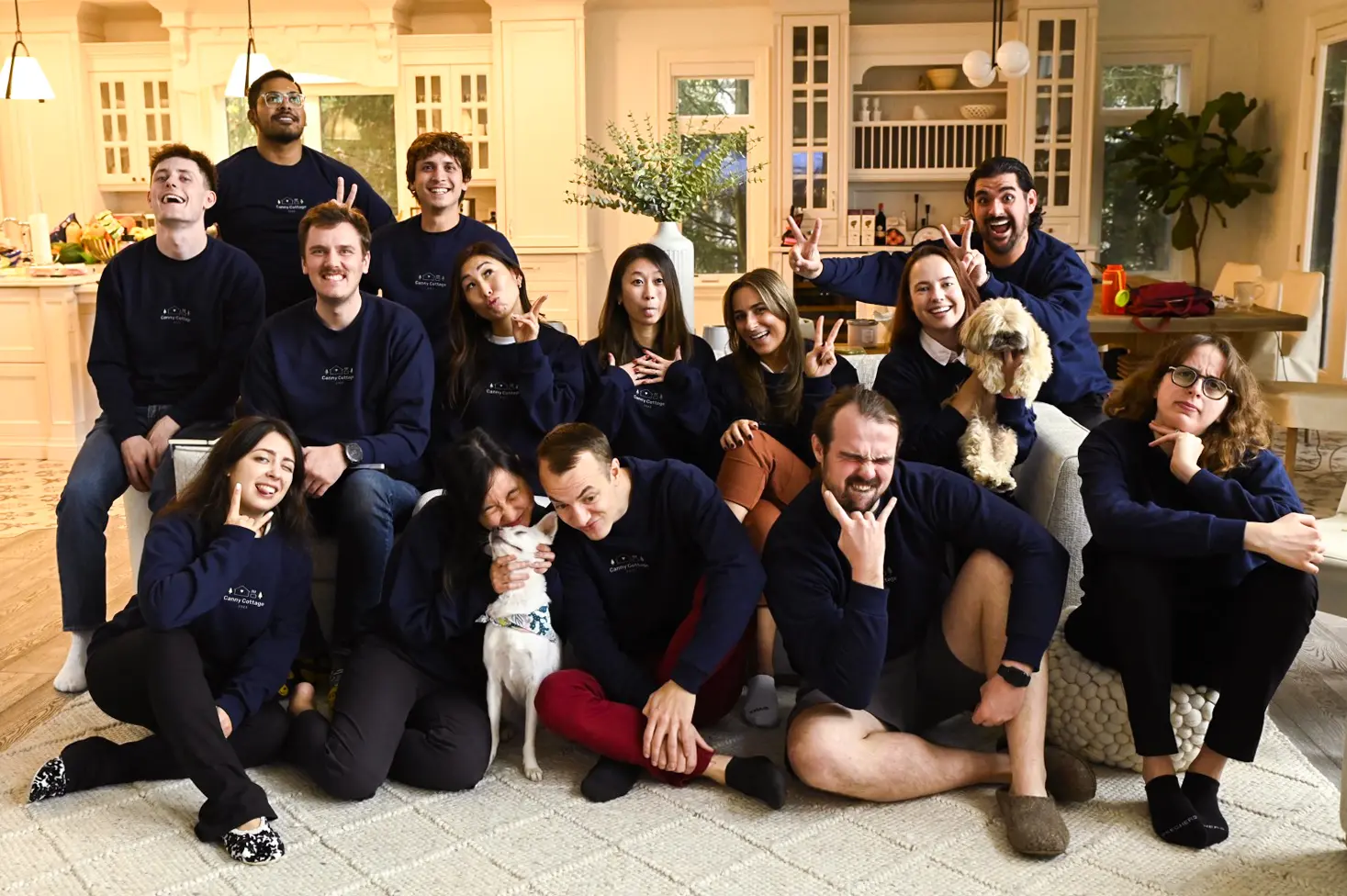
We select three people to conduct the culture interview. We always have one of the co-founders (usually Sarah) there. Dan, one of our engineers who has been at Canny for 5+ years, is generally there too.
“Most of all, we look for candidates who understand and value the MVP approach. It’s about identifying what is the 20% effort we can invest for 80% of the value. This mindset is crucial in startups – where resources are limited, and efficiency is key.”
Dan Murray, engineer at Canny
The third person is typically someone who wouldn’t work directly with that new hire. We want this person to assess the candidate’s culture fit versus the technical skills at this point.
We focus on things like:
- Are they easy to talk to?
- Do they seem like a well-rounded and interesting person who can add something to the team?
- If we met them outside of work, would we want to spend time with them?
- Will we be comfortable with them during our team retreats?
- Will they be comfortable communicating with our team?
- Do they make a good impression?
- Do they seem like a person who will take the initiative and help others?
- Are they a culture add?
“Some people assume that making it through the technical interviews means you’re basically in. We actually end up rejecting many candidates at the culture stage. That’s how much we value the culture aspect. Several times, it’s the deciding factor between two or more technically solid candidates.”
Sarah Hum, co-founder at Canny
Simon Sinek, a well-known speaker on business leadership, shares similar advice for finding culture fit.
Interviewing can be stressful. We try to make the process as enjoyable and valuable as possible. Our team members seem to think we’re doing a good job with this 🙂
“This was probably the best interview experience I’ve had with a tech company! And it was a strong selling point for me. It was clear the interviews placed as much emphasis on testing your technical abilities as well as your compatibility within the team. It’s nice to feel valued for more than just how good your code is!”
Niall Dickin, engineer at Canny
Offer
We always schedule a call to present a candidate with an offer. I’ve done every offer call since Canny’s inception and enjoy doing them. Just sending an email with an offer letter feels dry and impersonal. We want our new hires to feel special from the get-go.
During the offer call, we discuss:
- Position, responsibilities, and title
- Compensation (salary, benefits, stock options)
- Work arrangements (remote job, tech setup)
- Perks (retreats, etc)
- Start day
- Any pre-planned time off
- Next steps
- Anything else the candidate wants to cover
Key lesson: assess technical skills of each candidate. Don’t forget about the culture fit. Lots of people underestimate it.
How bootstrapped startup founders can build a great team
Here are some lessons we’ve learned at Canny that can help you on this journey.
Learn from our experience
One of our early challenges was hiring for roles we weren’t familiar with (sales and marketing). If you’re in a similar position, ask others for advice. Ideally, you have a friend who is experienced in sales or is a founder who has run a sales team. They can provide valuable insights and help you avoid common pitfalls.
Hire slow
Don’t rush into hiring decisions. Taking the time to find the right person is crucial.
Letting someone go is painful. It can also disrupt your team and operations. A deliberate approach to hiring pays off in the long run.
Assess your hiring needs carefully
Make sure each role you plan to fill is absolutely necessary and within your budget. Overstaffing can drain your resources. Understaffing can hinder your growth. Balance is key here.
Implement an onboarding process
Canny didn’t have a formal onboarding process for our first few hires. You might not need one either, especially at the very beginning. With time, start thinking about it to drive efficiency.
“Onboarding is one of the most important aspects of the employee experience. It’s a new hire’s first chance to see if what we sold them in the interview process is true. So we take onboarding seriously at Canny.”
Clare Garrity, head of operations at Canny
We use tools like ClickUp to outline goals for the first day and week. This sets new hires up for success and gives them space to ask questions.
“One of the aspects I enjoyed the most during onboarding was the welcome Slack channel. We set it up for every new hire. Everyone on the team asks them a fun question and shares their answer. Sometimes other team members also answer, and you learn a little about everyone.”
Clare Garrity, head of operations at Canny
These small things make a big difference, especially for fully remote teams like Canny.
Be economical and aim for ROI
Before you start spending on recruitment, set ROI criteria. This way, you’ll know what works and what doesn’t. Then, you can adjust your process for the future.
While we are mindful of costs, we don’t compromise on the quality of our hires. We invest in recruitment processes that bring us excellent candidates. This sometimes means spending on effective job boards or tools that bring in higher-quality candidates. As a result, we get skilled candidates who also align with our culture and vision. And we spend less time finding the perfect fit.
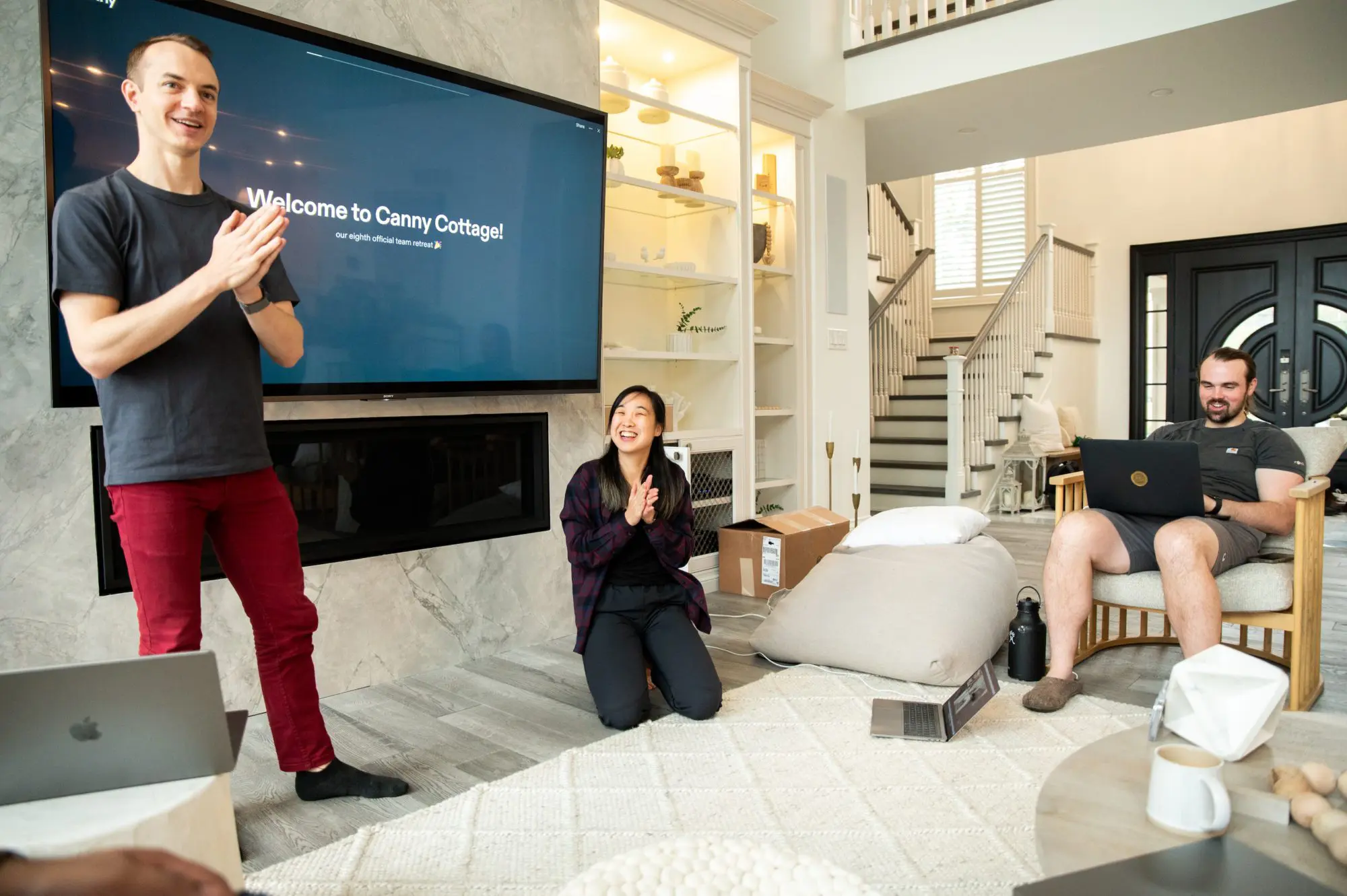
We need to be economical but also understand that unfilled roles can have costs. For example, productivity may decrease, existing team members can get overworked, and we may fall behind.
Key lesson: don’t rush with hiring. Make sure you actually need to hire and can afford it.
Hire, but be smart about it
Hiring is a tightrope walk, especially when you’re bootstrapping like we are at Canny. It’s all about finding that perfect balance.
Each phase of our Canny journey has taught us that hiring isn’t just about filling a seat. It’s about finding those gems who will bring something extra to the table.
Our biggest learning: take your time and don’t be afraid to wait for the right fit. Trust us, it’s worth it in the long run.
In short, hire smart, stay true to yourself, and keep building that dream team.


